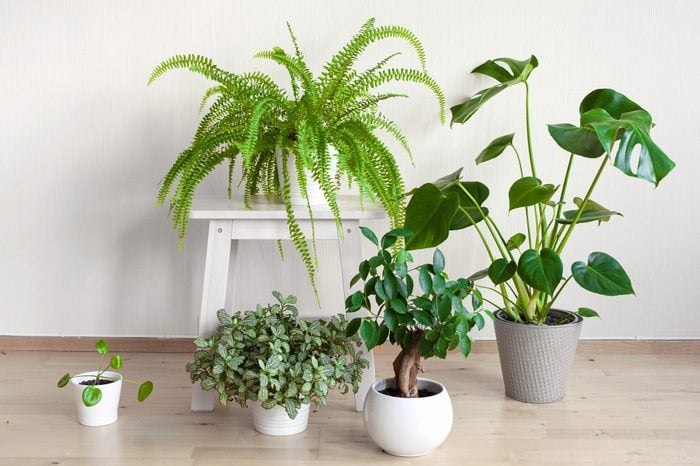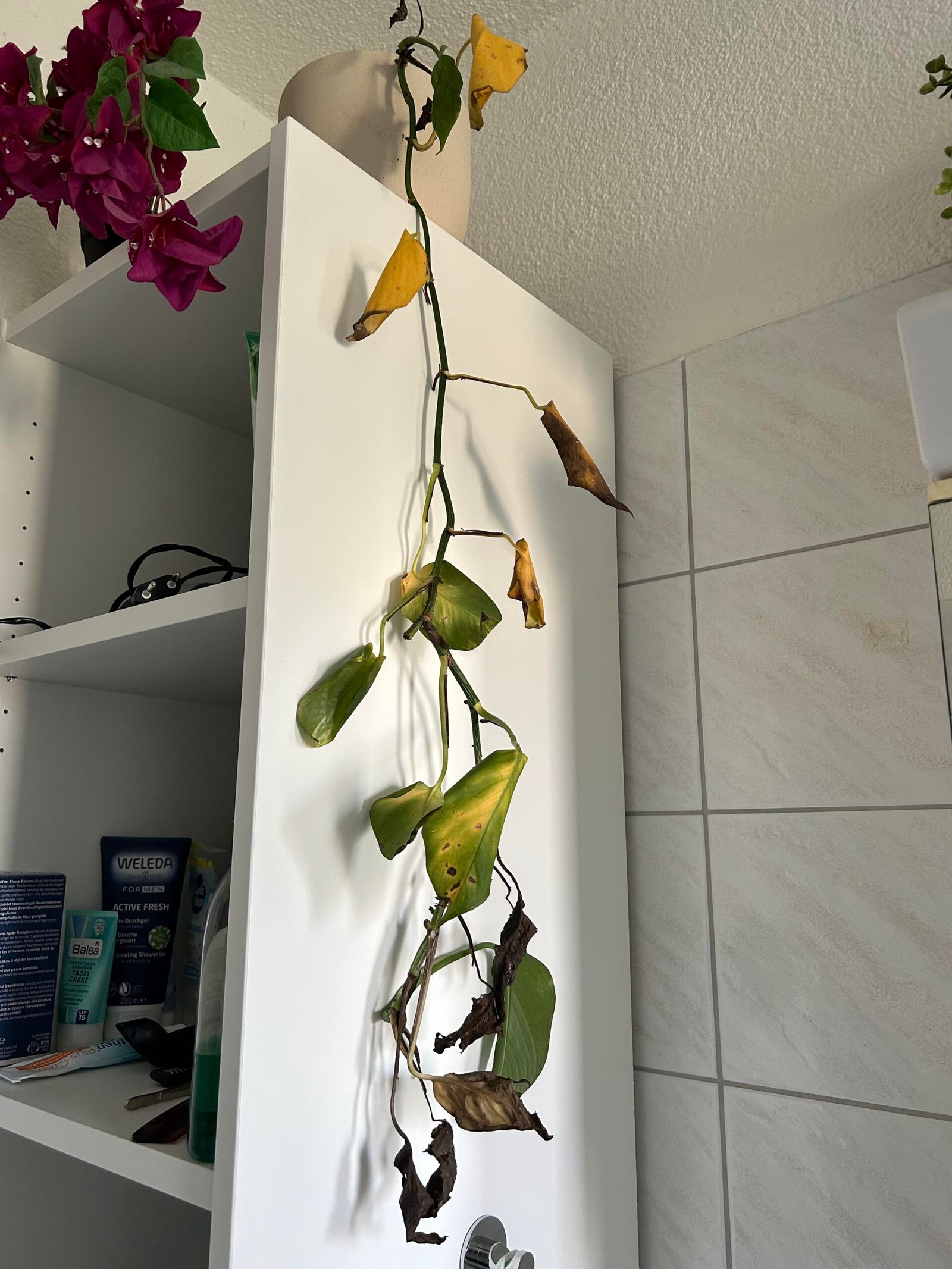Yes, small plants can survive in low light. Some even thrive in such conditions.
Small plants are great for indoor spaces with limited sunlight. Understanding their light needs helps them flourish. While some plants crave bright light, others manage well with less. Low light doesn’t mean no light; it means indirect or filtered light.
Many small plants adapt to these conditions beautifully. This makes them perfect for offices, rooms with few windows, or shaded areas. Knowing which plants to choose ensures you create a green and vibrant space. In this blog, we’ll explore how small plants cope with low light and which ones are best for your home or office. Let’s dive into the world of low-light small plants and their amazing adaptability.
Introduction To Low Light Conditions
Many people love keeping small plants indoors. But, can these plants survive in low light? Understanding low light conditions is vital. Let’s explore how light affects plants and what factors influence light intensity.
Importance Of Light For Plants
Light is essential for plants. It helps them produce food through photosynthesis. Without enough light, plants can’t grow well. They may become weak and pale. Small plants need light to thrive, even in low light conditions.
Factors Affecting Light Intensity
Several factors affect the intensity of light. These include:
- Distance from light source: The farther a plant is, the less light it gets.
- Obstructions: Walls, furniture, and other objects block light.
- Window direction: North-facing windows get less light than south-facing ones.
- Weather conditions: Cloudy days reduce light intensity.
- Time of year: Shorter days in winter mean less light.
Understanding these factors helps in choosing the right spot for small plants. Sometimes, low light conditions are unavoidable. But, knowing these factors can help you adjust and provide the best care for your plants.
Characteristics Of Low Light Plants
Understanding the characteristics of low light plants can help you select and care for these hardy species. These plants have adapted to survive in environments with limited sunlight. This makes them ideal for indoor spaces, shaded gardens, and offices.
Adaptations For Survival
Low light plants possess unique adaptations that enable them to thrive in dim conditions. These adaptations include:
- Larger leaves: They often have larger leaves to capture more light.
- Slow growth: They grow slowly to conserve energy.
- Efficient chlorophyll: Their chlorophyll works more effectively in low light.
- Minimal water needs: They typically require less water.
Common Low Light Plant Species
Several plant species are well-suited for low light conditions. Some of the most popular include:
- Snake Plant (Sansevieria): Known for its tall, sturdy leaves.
- Pothos (Epipremnum aureum): Features heart-shaped, trailing leaves.
- ZZ Plant (Zamioculcas zamiifolia): Recognized for its waxy, oval leaves.
- Peace Lily (Spathiphyllum): Famous for its white, hooded flowers.
- Spider Plant (Chlorophytum comosum): Noted for its arching, striped leaves.
These plants are not only easy to care for but also add beauty to any low-light space. Selecting the right species ensures your plants will thrive with minimal effort.
Photosynthesis In Low Light
Small plants often face the challenge of low light conditions. Can they survive? Let’s explore how these plants manage photosynthesis when light is limited.
Process Of Photosynthesis
Plants convert light into energy through photosynthesis. This process takes place in their leaves. During photosynthesis, plants absorb light, carbon dioxide, and water. They produce oxygen and glucose. These are vital for their growth.
| Component | Role |
|---|---|
| Light | Provides energy |
| Carbon Dioxide | Needed for sugar production |
| Water | Source of hydrogen and oxygen |
Impact Of Low Light On Photosynthesis
Low light affects photosynthesis. Plants receive less energy. This slows their growth. They struggle to produce enough glucose. As a result, small plants adapt in various ways.<ul
In extreme cases, plants may enter a dormant state. This helps them survive until light levels improve. Some plants are better adapted to low light. These include ferns and mosses. They thrive in shaded areas.

Credit: matsuoutdoorsmanshow.com
Best Practices For Growing Plants In Low Light
Small plants can thrive even in low light conditions. Selecting the right plants and optimizing indoor light are crucial. Follow these best practices to ensure your small plants grow healthy.
Choosing The Right Plants
Not all plants need bright light to thrive. Some plants are well-suited to low light environments. Here are a few:
- Snake Plant (Sansevieria): Hardy and can survive in low light.
- Pothos (Epipremnum aureum): Tolerates low light and is easy to care for.
- ZZ Plant (Zamioculcas zamiifolia): Can grow in dimly lit areas.
- Spider Plant (Chlorophytum comosum): Thrives in indirect light.
These plants are perfect for spaces with limited natural light.
Optimizing Indoor Light
Maximize the light available to your plants. Here are some tips:
- Place Plants Near Windows: Even low light plants benefit from some natural light. A north-facing window is ideal.
- Use Reflective Surfaces: Mirrors and white walls can help bounce light around the room.
- Artificial Lighting: LED grow lights can supplement natural light. Place them close to the plants for the best effect.
- Rotate Your Plants: Turn your plants regularly to ensure all sides receive light.
Implementing these strategies can help your small plants receive the necessary light to thrive.
Common Challenges And Solutions
Small plants in low light areas face many challenges. These challenges can affect their growth and health. Understanding these issues is key to finding solutions.
Dealing With Slow Growth
Low light often leads to slower plant growth. Plants need light for photosynthesis. Less light means less energy for growth. To help, place your plant near the brightest spot available. Clean the leaves regularly. Dust can block light.
Using a grow light can also help. These lights mimic sunlight. They give plants the energy they need. Make sure to follow the light’s instructions. Different plants need different amounts of light.
Preventing Plant Diseases
Low light can cause plant diseases. Plants become weak without enough light. Weak plants are more likely to get sick. Check your plant’s soil. It should not be too wet. Wet soil can lead to root rot. This is a common disease in low light.
Use well-draining soil. Water the plant only when the top inch of soil is dry. Make sure the plant pot has drainage holes. These steps help keep the roots healthy. Healthy roots mean a healthy plant.
Alternatives To Natural Light
Small plants can thrive in low light. But they still need some light to grow. If natural light is not enough, consider artificial light sources. These options can help your plants get the light they need. Let’s explore some effective alternatives.
Using Artificial Lights
Artificial lights can mimic the sun’s rays. They provide the energy plants need for photosynthesis. It’s important to choose the right type of light. This will ensure your plants grow healthy and strong.
There are different artificial lights available. Each has its own benefits. Understanding these can help you make the best choice for your plants. Let’s look at some common options.
Types Of Grow Lights
Fluorescent Lights: These are good for small plants. They are energy-efficient and produce low heat. This makes them safe for plants that need low light.
LED Grow Lights: These are popular for many reasons. They use less energy and last longer. LEDs can also provide a full spectrum of light. This is ideal for plant growth.
Incandescent Lights: These are less common for plant growth. They produce more heat and use more energy. They are not the best option for small plants.
Here is a quick comparison of these grow lights:
| Type | Energy Efficiency | Heat Production | Spectrum |
|---|---|---|---|
| Fluorescent | High | Low | Limited |
| LED | Very High | Very Low | Full |
| Incandescent | Low | High | Limited |
Choosing the right grow light is essential. It can make a big difference in your plant’s health. Select a light that matches your plant’s needs. With the right care, even small plants can thrive in low light conditions.
Benefits Of Growing Plants In Low Light
Many people think that plants need a lot of sunlight to grow. But, some plants thrive in low light. These plants offer a range of benefits. Let’s explore the benefits of growing plants in low light.
Aesthetic Value
Low light plants add beauty to any space. They create a calming atmosphere. Plants like ferns, peace lilies, and snake plants are popular choices. Their lush green leaves make rooms feel more inviting. Even small spaces can look fresh and lively with these plants.
Health Benefits
Plants in low light areas improve air quality. They absorb carbon dioxide and release oxygen. This process helps reduce indoor pollution. Breathing cleaner air promotes better health. It can help reduce headaches and fatigue.
Plants also increase humidity. This is good for skin and respiratory health. Dry indoor air can cause issues like dry skin and throat irritation. Plants help maintain a balanced moisture level.
Studies show that being around plants reduces stress. They create a peaceful environment. People feel more relaxed and focused. This can lead to improved mental health.
:max_bytes(150000):strip_icc()/low-light-plants-GettyImages-1360510675-50ad3d1ad95942ecaed5e4cee84f7572.jpg)
Credit: matsuoutdoorsmanshow.com
Conclusion And Final Thoughts
Small plants can survive in low light with proper care. Choose species like pothos or snake plants. These thrive in dimmer environments.
Small plants bring life and color to any space. Understanding their needs is crucial for their survival. This section wraps up our discussion on whether small plants can thrive in low light.Summary Of Key Points
- Small plants can survive in low light conditions.
- Choosing the right plant species is essential.
- Low light plants include snake plants, pothos, and ZZ plants.
- Proper care involves regular watering and occasional fertilization.
- Avoid overwatering to prevent root rot.
- Consider supplementing with artificial light if needed.
Future Of Low Light Gardening
The future of low light gardening looks promising. Here are some trends and innovations to watch out for:| Trend | Description |
|---|---|
| Smart Grow Lights | Automatically adjust light levels based on plant needs. |
| Self-Watering Pots | Help maintain consistent moisture levels. |
| Plant Care Apps | Provide tips and reminders for plant care. |

Credit: www.thesill.com
Frequently Asked Questions
Can Small Plants Thrive In Low Light?
Yes, many small plants can thrive in low light. Species like snake plants and pothos are well-suited for such conditions.
Which Small Plants Grow In Low Light?
Small plants like spider plants, ZZ plants, and peace lilies grow well in low light.
How Often Should I Water Low Light Plants?
Water low light plants less frequently. Check the soil moisture and water when the top inch is dry.
Do Low Light Plants Need Fertilizer?
Yes, but sparingly. Use a balanced, water-soluble fertilizer once a month during the growing season.
Conclusion
Small plants can thrive in low light. Choose the right species. Use proper care. Watering and occasional feeding help. Place them near windows or under artificial lights. Monitor their growth regularly. They bring beauty and freshness to any space. Even dim corners.
Suitable for homes, offices, or dorm rooms. Perfect for plant lovers everywhere. Enjoy the green touch.





